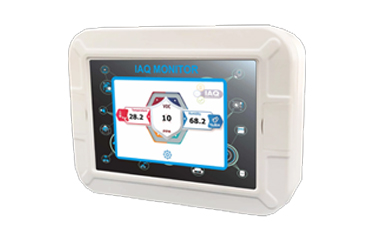
why IAQ Monitoring for a Better Environment
Indoor Air Quality (IAQ) plays a pivotal role in our health, productivity, and overall well-being. In recent years, the conversation surrounding IAQ has gained momentum as more people recognize the profound impacts that air quality has on both individuals and the environment.
Understanding Indoor Air Quality
Before diving into the benefits of IAQ monitoring, it’s crucial to understand what indoor air quality entails. IAQ refers to the air quality within and around buildings and structures, influenced by factors such as indoor pollutants, ventilation, humidity levels, and temperature. Common indoor pollutants include volatile organic compounds (VOCs), carbon dioxide (CO2), particulate matter, mold, and tobacco smoke, amongst others. Poor IAQ can lead to various health issues, including headaches, respiratory ailments, and long-term diseases.
The Importance of IAQ Monitoring
- Health Benefits
One of the foremost reasons to monitor IAQ is to safeguard health. According to the World Health Organization (WHO), air pollution is one of the leading environmental threats to health. By implementing IAQ monitoring systems, we can identify harmful pollutants and take corrective actions
- Enhanced Productivity
It’s been proven that poor indoor air quality can significantly affect productivity. In workplaces, contaminates can lead to decreased motivation, lack of focus, and increased absenteeism. Studies have shown that improving IAQ can boost cognitive function and productivity by up to 20%.
- Environmental Impact
Monitoring IAQ doesn’t just benefit individuals; it also positively impacts the environment. By identifying and mitigating pollutants and improving ventilation, we can reduce energy consumption and the overall carbon footprint of a building
- Compliance and Best Practices
Many regions have regulatory standards for indoor air quality, especially in public buildings, schools, and workplaces. IAQ monitoring helps organizations comply with these standards, providing accountability and transparency to stakeholders.
- Proactive Identification of Issues
IAQ monitoring systems provide real-time data and analytics, helping identify issues before they escalate into larger problems. This proactive approach allows for timely interventions, whether it’s repairing a ventilation system, addressing humidity levels, or eliminating potential chemical sources.
Choosing the Right IAQ Monitoring System
Investing in an effective IAQ monitoring system requires careful consideration. When selecting a system, look for features such as:
- Real-time monitoring: Instant data access allows for immediate response to air quality issues.
- Multiple pollutant tracking: Ensure the system can measure different types of air pollutants, including VOCs, particulate matter, and CO2.
- User-friendly interface: Ease of use is critical for professionals and occupants alike.
- Integration capabilities: Choose systems that can integrate with existing building management systems for streamlined operations.
Conclusion
IAQ monitoring is a fundamental component of creating healthier, safer, and more sustainable environments. As we become increasingly aware of the impact of indoor air quality on our lives, the importance of proactive monitoring cannot be overstated.
